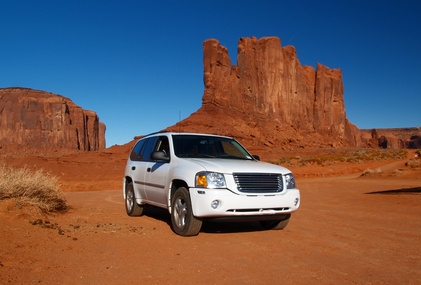
Constant Velocity (CV) joints are used in front wheel drive and four wheel drive vehicles almost exclusively. Chevy uses CV joints in nearly 85% of its vehicles. The Chevy Blazer and other four wheel drive applications also have a differential in the transaxle that can be the source of some noises. The diagnostic keys are noise isolation, inspection of components, and replacement or repair when necessary.
Shift your blazer into gear if it has an automatic transmission. A clunking noise indicates a worn inner or outer joint. In this case, the axle will need to be replaced.
Listen for the noise as you accelerate and decelerate your Blazer. If you hear a clunking noise at this time, it indicates a worn inner joint, or a problem with the differential. Raise the Blazer with the jack, securing it on the jack stands, and twist the axle forward and backward quickly with one hand. With the other, feel the inboard collar, and see if the clunk is felt there. If not the problem is in the differential. Most commonly the problem is in the inner joint. If the inner joint is found to be the problem, replace the worn axle.
Listen for the noise while turning. If a distinct clicking or popping sound is heard, the culprit is the outer CV joint. Replace the worn axle.
Listen for a continuous knock at low speed. This also indicates a worn CV joint, usually the outer joint. Replace the worn axle.
Listen for a continuous humming or growling noise. This indicates either lack of lubrication to the CV joints. or bad wheel bearings. Inspect the CV boots for tears or leaks where the grease has escaped. If caught in time, the CV boot can simply be replaced, and lubrication restored. If there are no tears of leaks in the CV boots, inspect wheel bearings, and replace if necessary.